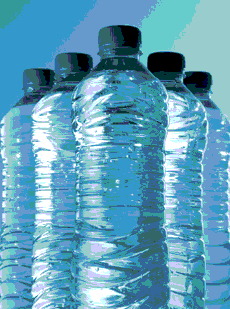Open bottles bring risks
 A new study suggests that just opening a plastic bag or bottle may release microplastics.
A new study suggests that just opening a plastic bag or bottle may release microplastics.
Experts say opening plastic packaging, such as plastic bags and bottles may contribute to the generation of small amounts of microplastics — small plastic particles less than 5 mm long.
Microplastics are generally believed to originate directly from industry, for example as cosmetic exfoliates, or indirectly from the breakdown of larger plastic items over time. However, the contribution of daily tasks such as cutting, tearing or twisting open plastic packaging and containers has not been fully understood.
Researcher Cheng Fang and colleagues sought to fill this gap by monitoring the generation of microplastics during the tearing open of chocolate packaging, cutting of sealing tapes and opening of plastic bottle caps.
The generation of microplastics during these processes was confirmed using chemical tests and microscopy.
The authors found that different shapes and sizes of microplastics were generated during tearing or cutting.
These included fibres, fragments or triangles, ranging from nanometres to millimetres in size. Fragments and fibres were generated most often.
The authors estimated that ten to 30 nanograms (0.00001–0.00003 milligrams) of microplastics may be generated per 300 centimetres of plastic during cutting or twisting, depending on the opening approach and conditions of the plastic, such as stiffness, thickness or density.








 Print
Print